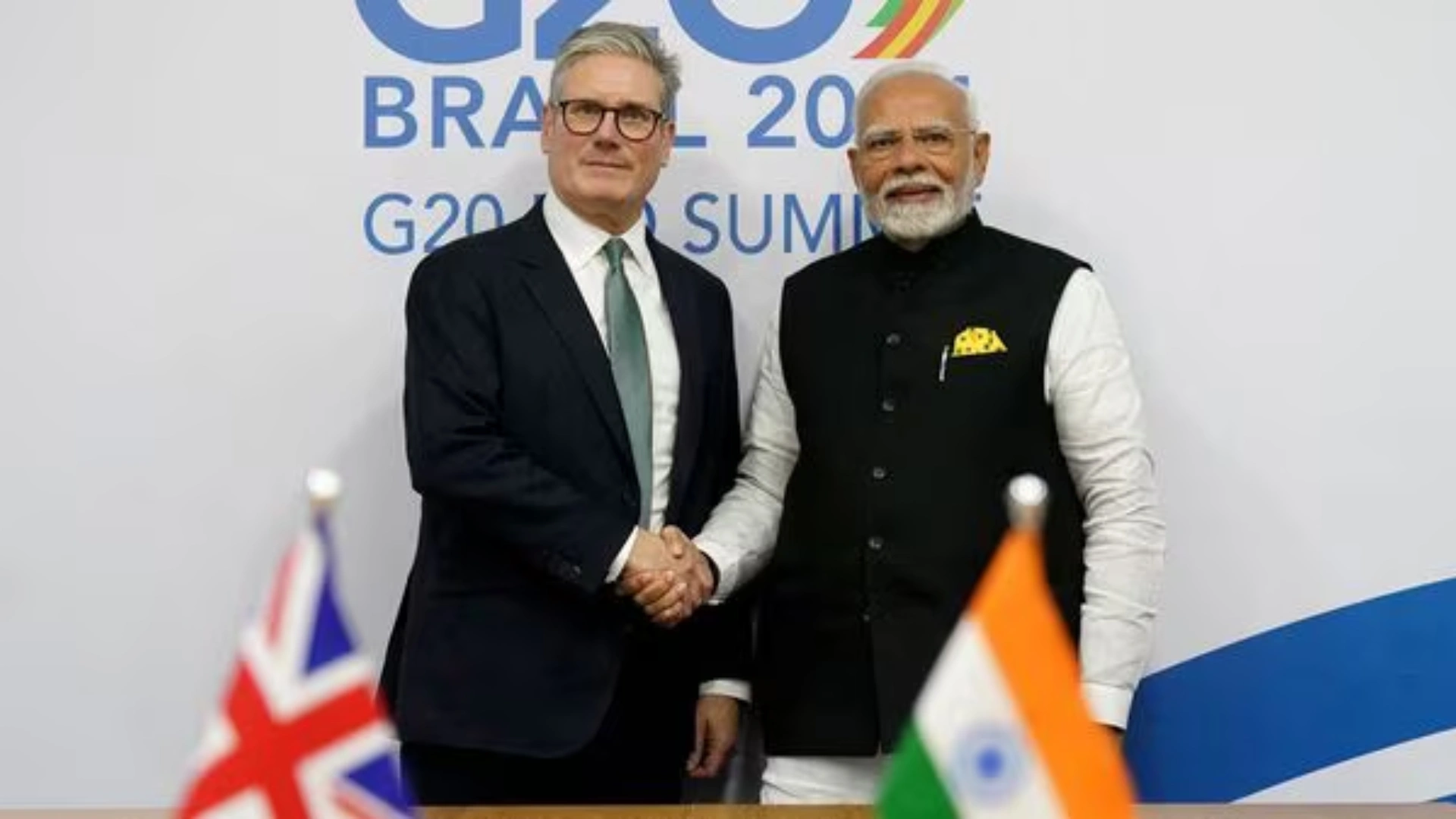On May 6, 2025, India and the UK successfully concluded a major Free Trade Agreement (FTA) and Double Contribution Convention after three years of negotiations. This marks India’s first-ever trade deal with a Western country. The main goal of the FTA is to strengthen economic ties between the two nations, with current bilateral trade valued at $60 billion, expected to double within the next five years. The UK anticipates a £25.5 billion increase in trade and significant economic growth from the deal.
Key Features of the India-UK Trade Deal
The FTA includes reciprocal reductions in import duties on various goods. Here’s how it works:
- Reduced Tariffs on UK Products:
- India has agreed to lower tariffs on several important UK products. For example, automobile tariffs, which are currently more than 100%, will be slashed to 10%. However, India will impose a quota on the number of British cars that can be imported.
- Import duties on popular UK spirits, like whisky and gin, will also decrease from 150% to 75% initially, with plans for further cuts to 40% after ten years.
- Other Product Tariff Reductions:
- India will reduce import duties on various other UK goods, including cosmetics, medical devices, lamb, salmon, soft drinks, chocolate, and biscuits.
- Over the next decade, India will cut tariffs on 90% of tariff lines, and 85% of these products will be tariff-free.
- Boost for UK Manufacturers:
- British manufacturers in sectors such as aerospace and high-end optical products will have better access to the Indian market.
- Concessions on Indian Products:
- In exchange, the UK will reduce tariffs on Indian exports, such as clothing, footwear, and food products, including frozen prawns.
- Comprehensive Market Access:
- The India-UK FTA provides access to almost 99% of tariff lines, covering nearly all of India’s trade with the UK. Key industries benefiting from the agreement include textiles, marine products, leather, footwear, gems and jewellery, auto parts, and organic chemicals. However, sensitive products like dairy, apples, and cheese will not enjoy tariff cuts.
Expanding Services and Professional Mobility
The FTA also covers services and the mobility of professionals, making it easier for contractual service suppliers, business visitors, investors, and skilled professionals (such as musicians, yoga instructors, and chefs) to work in both countries.
The Double Contribution Convention
An important part of the agreement is the Double Contribution Convention. This provision will exempt Indian workers and employers from contributing to the UK’s social security system for up to three years. This will lead to estimated savings of 20% for workers and around ₹4,000 crore for employers.
Key Highlights of the India-UK FTA:
- The FTA with the UK is a modern, comprehensive and landmark agreement which seeks to achieve deep economic integration along with trade liberalisation and tariff concessions.
- The FTA ensures comprehensive market access for goods, across all sectors, covering all of India’s export interests. India will gain from tariff elimination on about 99% of the tariff lines covering almost 100% of the trade value offering huge opportunities for increase in the bilateral trade between India and the UK.
- The FTA provides positive impact on manufacturing across labour and technology intensive sectors and opens up export opportunities for sectors such as textiles, marine products, leather, footwear, sports goods and toys, gems and jewellery and other important sectors such as engineering goods, auto parts and engines and organic chemicals. This will substantially improve Indian goods competitiveness in the UK vis-a-vis other countries.
- The FTA will have significant positive gains for employment in India.
- India will benefit from one of the most ambitious FTA commitment from the UK in Services such as IT/ITeS, financial services, professional services, other business services and educational services, opening up new opportunities and jobs.
- The FTA eases mobility for professionals including Contractual Service Suppliers; Business Visitors; Investors; Intra-Corporate Transferees; partners and dependent children of Intra-Corporate Transferees with right to work; and Independent Professionals like yoga instructors, musicians and chefs.
- Immense opportunities for talented and skilled Indian youth will open up in the UK which is a major global centre for digitally delivered services due to its strong financial and professional services sectors and advanced digital infrastructure.
- India has secured significant commitments on digitally delivered services for Indian service suppliers, specially in professional services such as architecture and engineering, computer related services and telecommunication services.
- The exemption for Indian workers who are temporarily in the UK and their employers from paying social security contributions in the UK for a period of three years under the Double Contribution Convention will lead to significant financial gains for the Indian service providers and enhance their competitiveness in the UK market that would create new job opportunities as well as benefit large number of Indians working in the UK.
- India has ensured that non-tariff barriers are suitably addressed to ensure free flow of goods and services and that they do not create unjustified restrictions to India’s exports.
- The FTA seeks to promote good regulatory practices and enhance transparency that are in sync with India’s own focus on domestic reforms to enhance the ease of doing business.
Significance of the Deal
For India, this agreement represents the first of three major trade deals under negotiation with Western countries, with others planned with the US and the European Union. India had already signed a trade deal with the European Free Trade Association (EFTA) last year, but this agreement with the UK is its first bilateral deal with a Western nation. For the UK, this FTA is considered the “biggest and most economically significant” trade deal since the country left the European Union.
